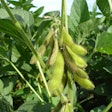
The U.S. Department of Agriculture (USDA) has released its Agricultural Projections to 2033, offering a comprehensive outlook for the nation's agricultural sector over the next decade. The report, compiled by the Interagency Agricultural Projections Committee, forecasts modest economic growth and significant shifts in crop production, livestock output, and international trade patterns.
Key highlights from the projections include:
Crop acreage and production: The total planted acres for the eight major field crops are expected to decline from 252.6 million acres in 2024/25 to 246.7 million acres by 2033. This reduction primarily stems from lower corn and wheat acreage, with upland cotton being the only crop projected to show upward movement. Despite the decrease in planted area, production for most crops is anticipated to rise due to yield improvements.
Corn prices are projected to stabilize at $4.30 per bushel for most of the period, with planted acreage declining to 88 million acres by the end of the projections. Soybean prices are expected to flatten at $10.50 per bushel starting in 2026/27, with planted area holding steady at 87 million acres throughout the decade.
Livestock and dairy: Production for all main animal products is forecast to rise over the projection period, achieving record levels for most categories. Beef commercial production is projected to increase by 11.3%, pork by 13.6%, and chicken by 11%. Milk production is expected to grow by 9.1%, while egg production is forecast to rise by 11.8%.
Trade outlook: The USDA anticipates challenges for U.S. agricultural exports in the near term. Total agricultural exports are projected to decrease by 14% to $169.5 billion in fiscal year 2024 from the record $196.1 billion in 2022. This decline is attributed to reductions across a broad range of commodities, including corn, soybeans, cotton, and livestock products.
Conversely, agricultural imports are forecast to reach a record $200.0 billion in 2024 before slowing. This growth is driven by strong imports of livestock products, processed grain products, sugar and tropical products, and horticultural products. The trade balance is expected to remain negative throughout the projection period, with the largest deficit of $30.5 billion anticipated in 2024.
Farm income: Net farm income is projected to decrease by 4.8% to $143.8 billion in 2024 and is expected to further decline to $123.6 billion by 2033. Net cash farm income is forecast to drop by 12% to $138.9 billion in 2024 and fall to $123.4 billion by 2033. Lower cash receipts due to declining commodity prices are the primary contributors to this projected decrease.
















